It seems like, surrounded by sublime scenery, Norwegian designers have a strong belief it is as much about the journey as the destination. Some of their dramatic rest stops not only offer drivers travelling the scenic highways of Norway thoroughly designed service areas, but have all the makings of a destination for a memorable day trip.
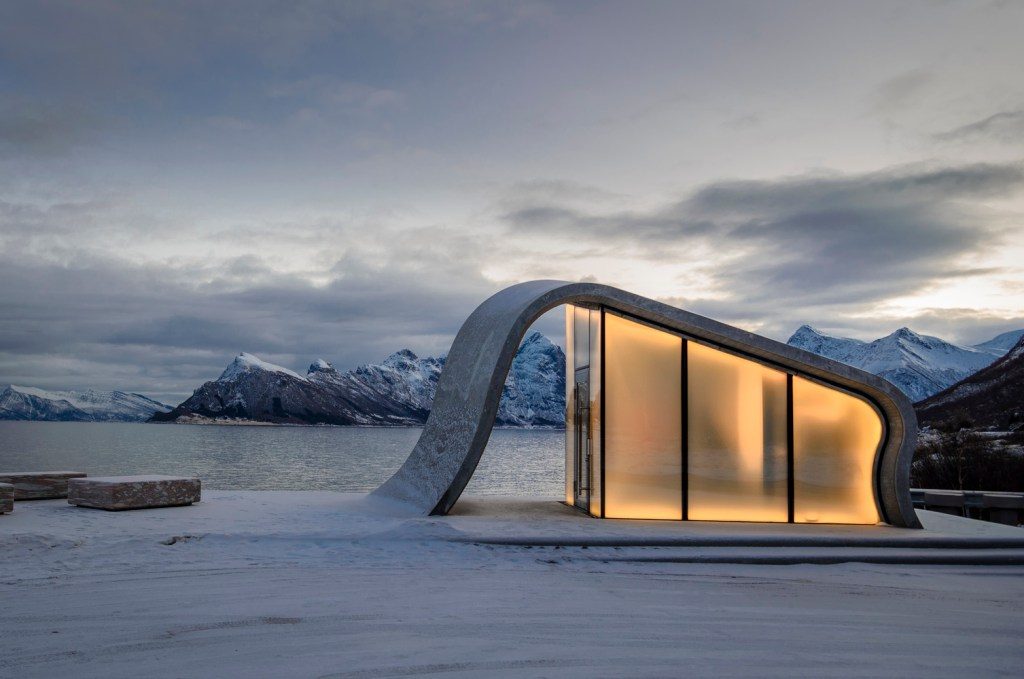
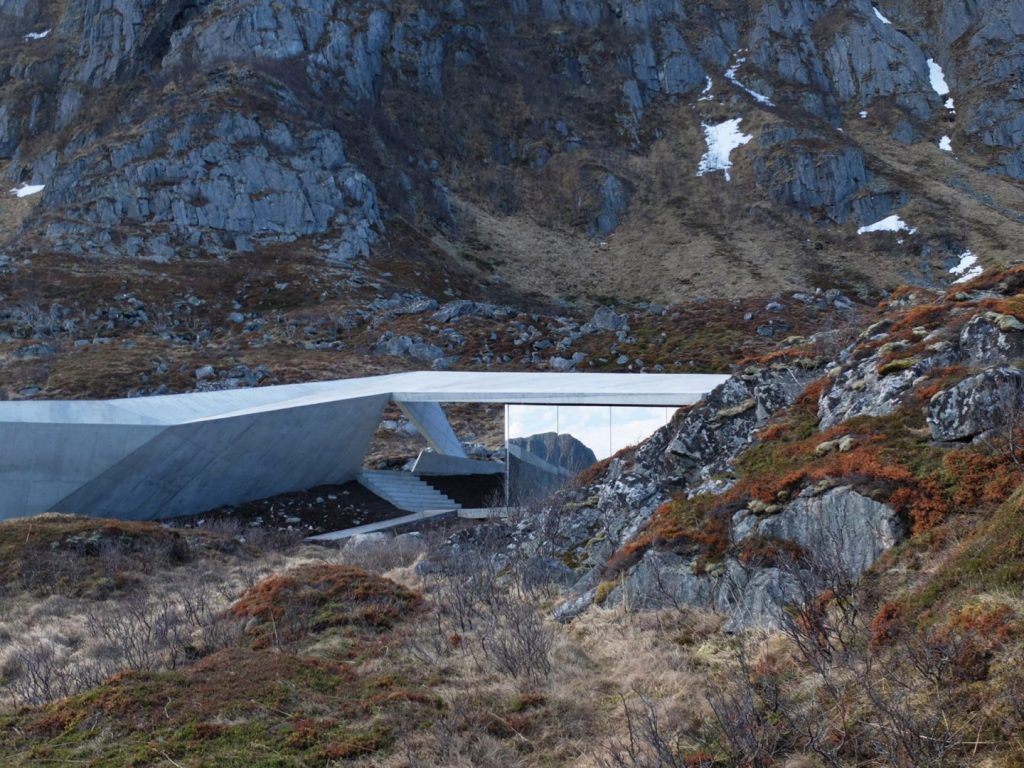
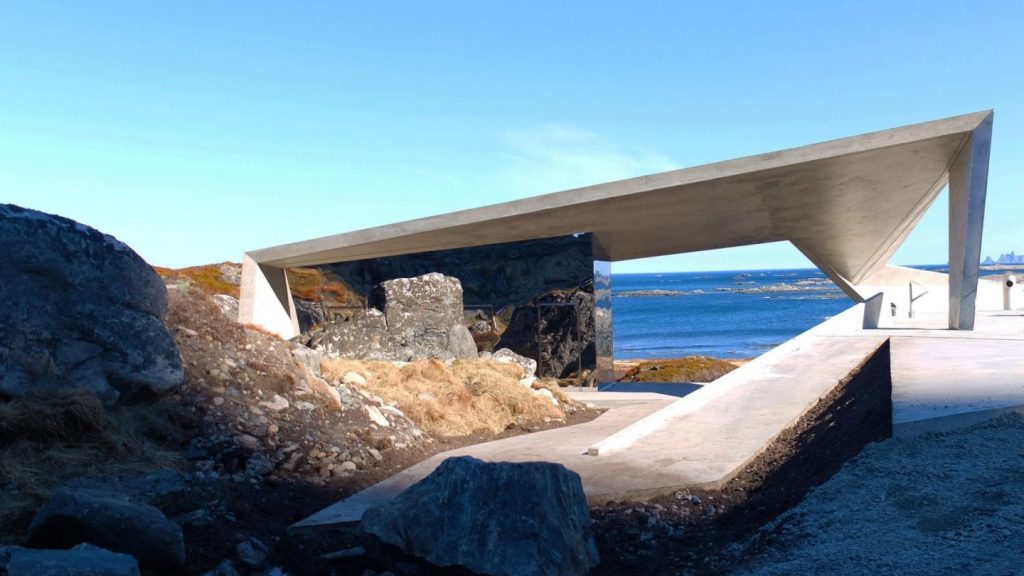
Bukkekjerka rest stop by Morfeus Arkitekter. Ph: Caroline Støvring (via archdaily)
A mirrored rest stop by Oslo-based studio Morfeus Arkitekter located is located on the coastline of Andoya next to the rock formation known as Bukkekjerka could easily pass for a Brutalist home. Situated on a scenic road route like this, the structure with restrooms was conceived to appear more like landscape and sculptural elements, rather than a building.
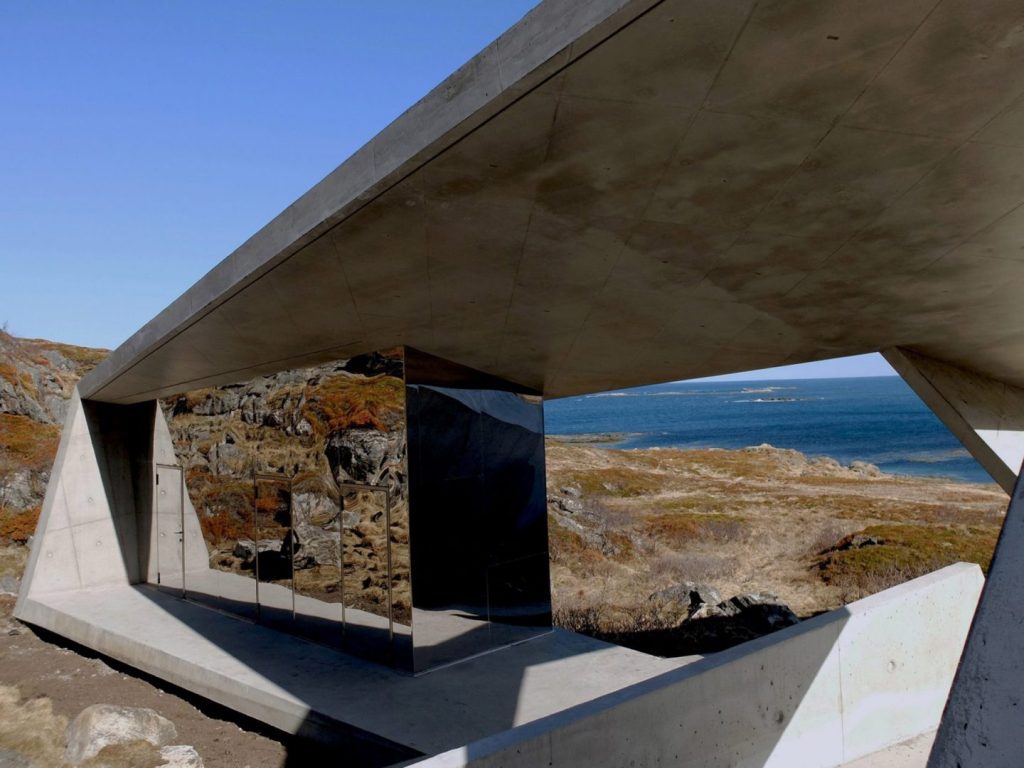
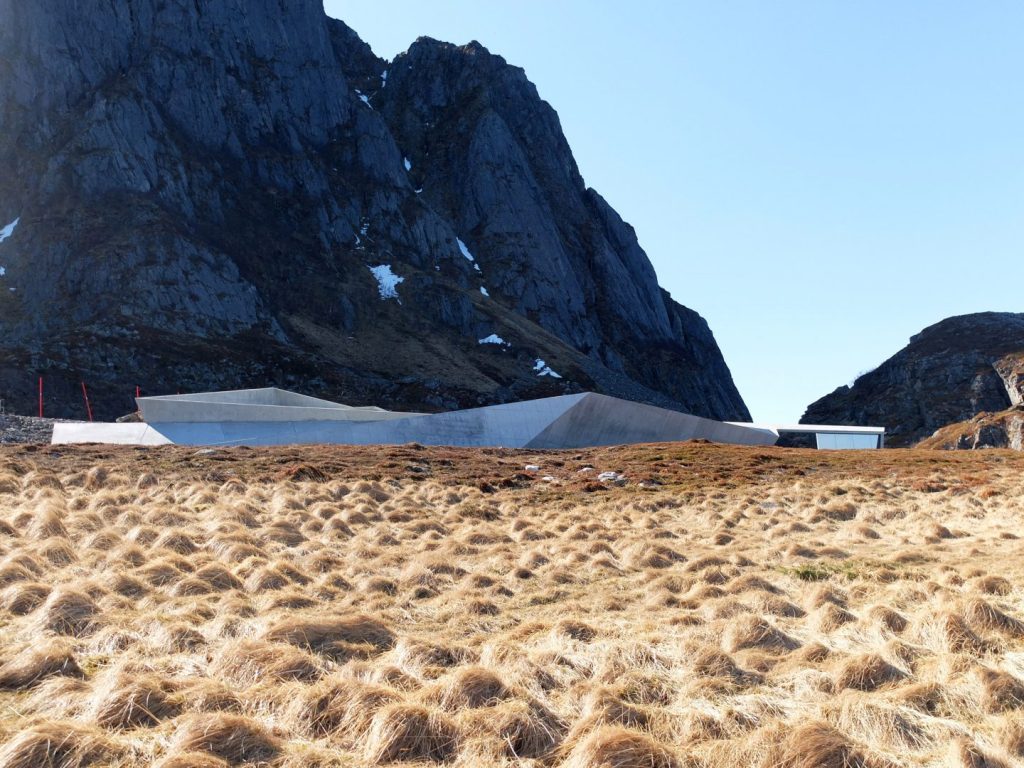
Bukkekjerka rest stop by Morfeus Arkitekter. Ph: Caroline Støvring (via archdaily)
The design concept comprises folded concrete slabs, inspired by the jagged mountain peaks in the area, and a wall of one-way mirrored glass allowing users to gaze out on the terrain and the open sea in total privacy when inside. The building otherwise consists of polished, acid-resistant steel that reflects the surroundings. The mirroring makes the service building melt in with the surrounding landscape, simultaneously offering new and shifting experiences. With free standing benches and a picnic area to enjoy the sea and mountain views, this rest stop offers passing drivers everything for a great pit stop.
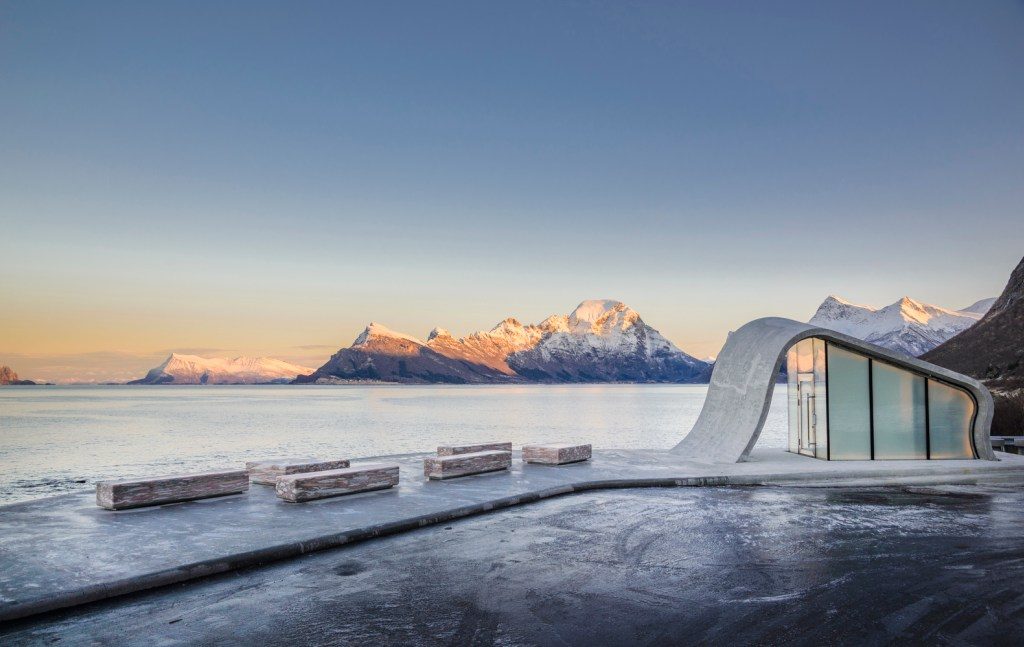
Rest area in Ureddplassen by Haugen/Zohar Arkitekter (also header image)
Haugen/Zohar Arkitekter, another Oslo based practice founded by Marit Justine Haugen and Dan Zohar, were commissioned to redesign the World War 2 memorial monument honoring the submarine Uredd in Ureddplassen, a frequently visited site just along the Norwegian Scenic Route Helgelandskysten. The new project also features a striking rest area to admire Aurora Borealis in winter and the midnight sun in summer.
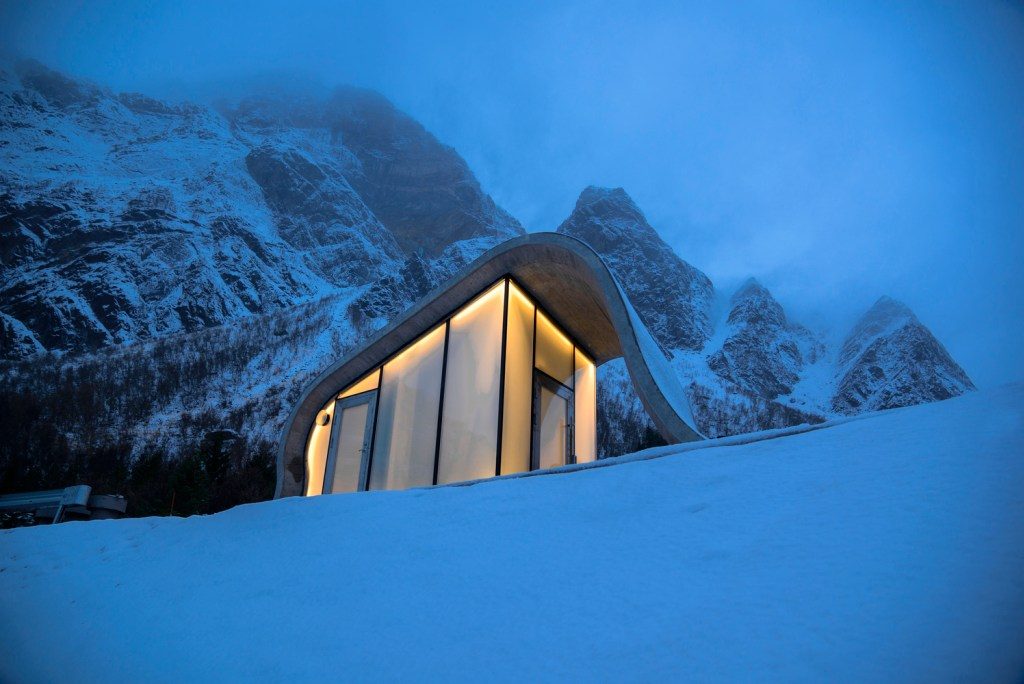
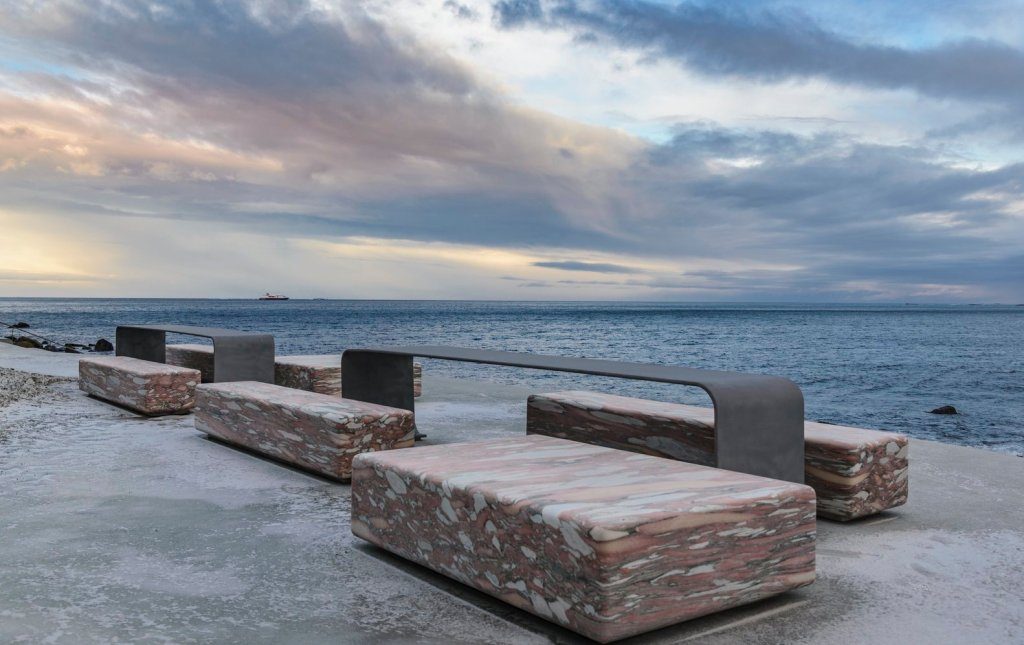
Rest area in Ureddplassen by Haugen/Zohar Arkitekter
The layout encompasses a concrete viewing terrace facing the sea, an amphitheater extending towards the shoreline, benches in the characteristic marble from Fauske and a toilet building located at the edge of the terrace, its sloping rooftop mimicking the silhouette of the surrounding mountain peaks.
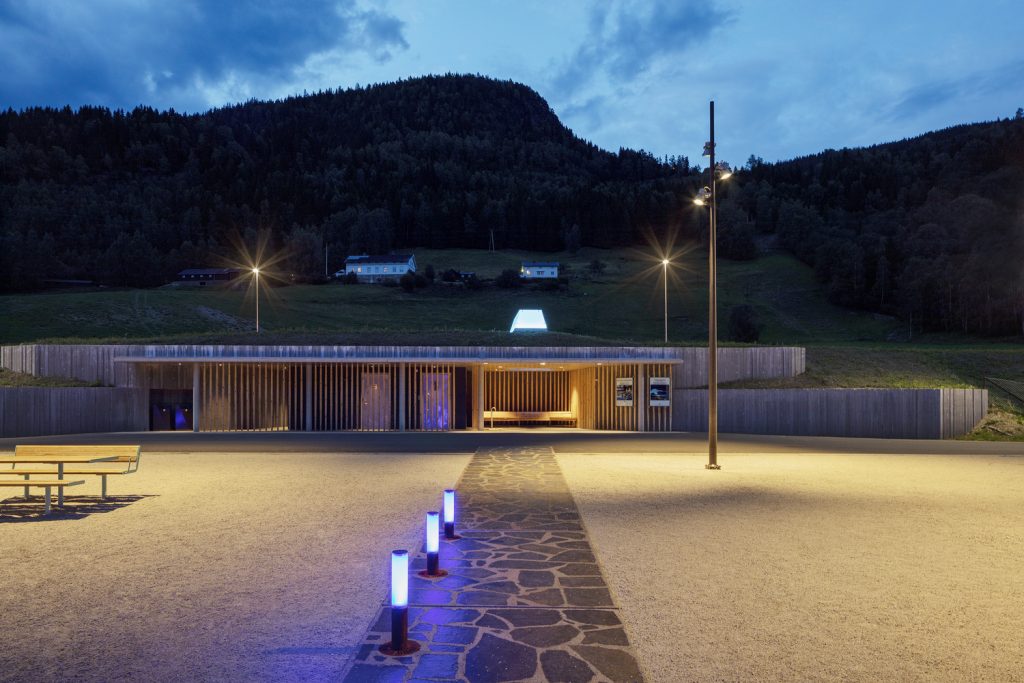
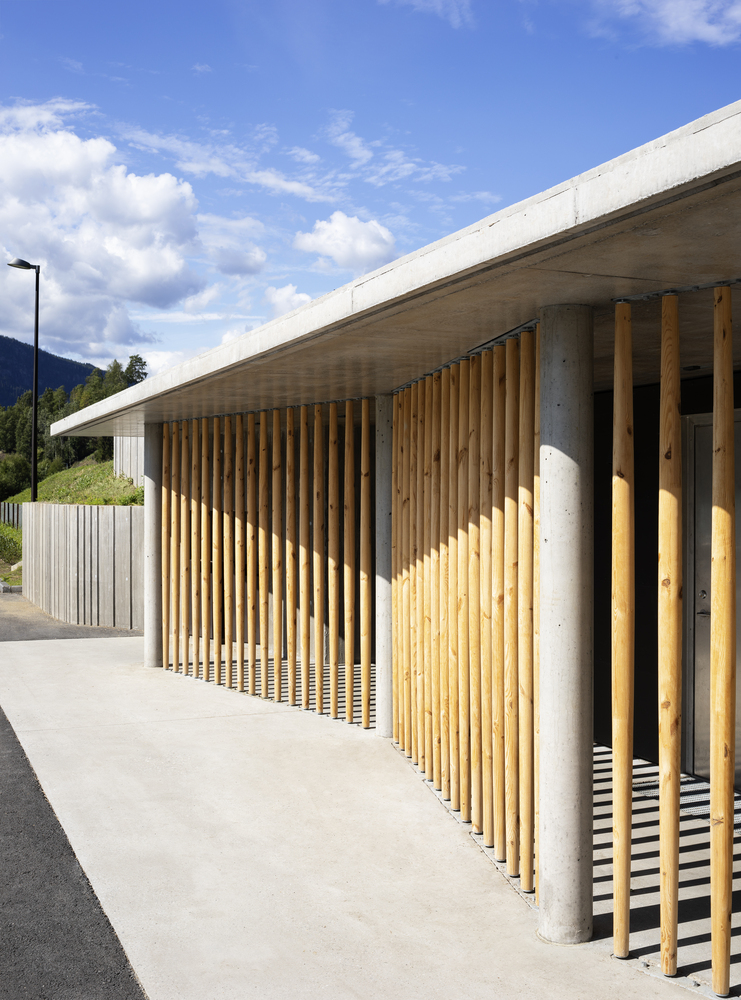
Krekke rest area by Pushak and Lala Toyen
Krekke is a rest stop along the main road through Gudbrandsdalen, but it’s also a park area for the local community of Fåvang, Ringebu. Pushak Architects from Oslo and Lala Toyen placed the service functions inside an embankment that works as a noise barrier between the park and the highway, with a path of precast concrete slabs – a ‘desire line’ – lined with light poles leading from it towards the river bank. With the area subject to floods on a yearly basis, the row of lights (so positioned the light will always remain above water) will indicate the water level in case of a flood.
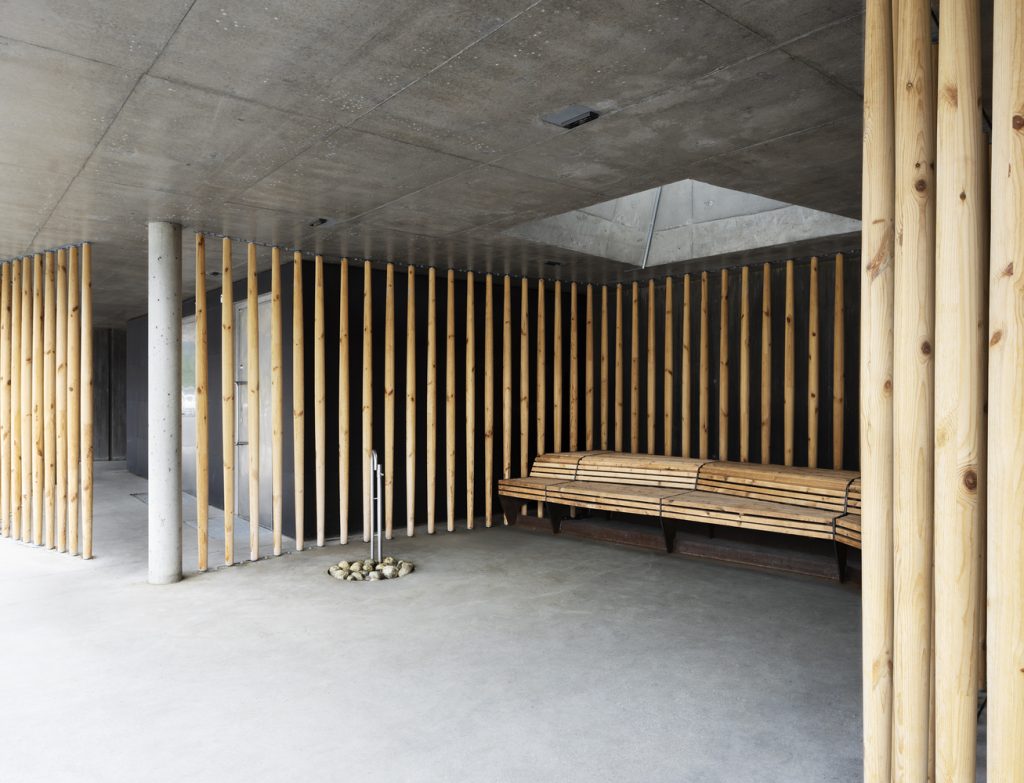
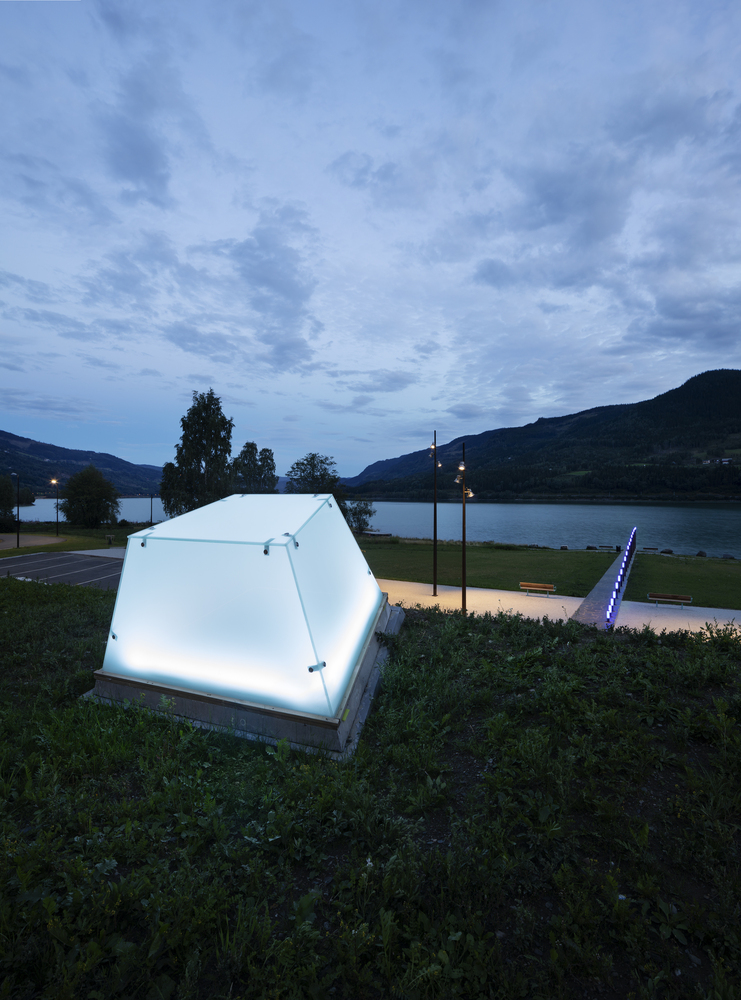
Krekke rest area by Pushak and Lala Toyen
The concrete walls supporting the noise barrier are folded inward to make room for a small service building. Four toilets and a small storage space are placed behind a screen wall of coned pine poles, next to a sitting area with a drinking fountain and a small sitting amfitheatre. Natural light fills in the sitting area filtering through a shaped skylight, which protrudes from the top of the barrier as an orientation mark for those who drive by.
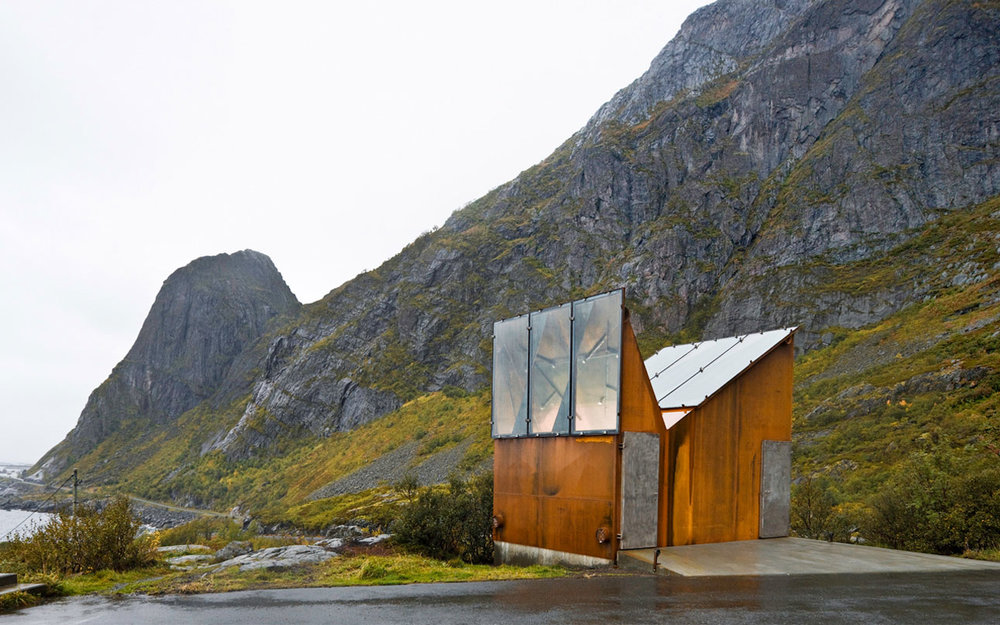
Akkarvik roadside rest room by Manthey Kula
Akkarvik roadside rest room on Moskenes island, Lofoten was designed by Manthey Kula Architects to replace to be built in connection with the existing rest stop by landscape architect Inge Dahlmann/Landskapsfabrikken. Developed to replace an old toilet facility that had been lifted off its footing by strong winds, the small structure was pragmatically designed to be very heavy, so it is built from 10-12 mm sheets of structural Corten steel welded together on site. To prevent rust staining, surfaces that are like to come in contact with visitors’ clothes are made in stainless steel or covered in glass panels.
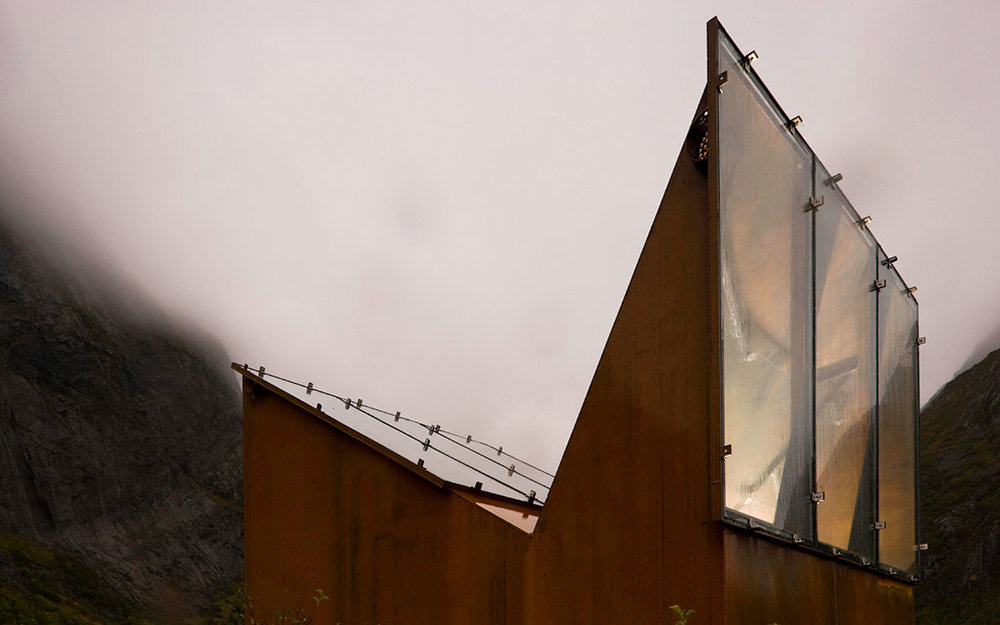
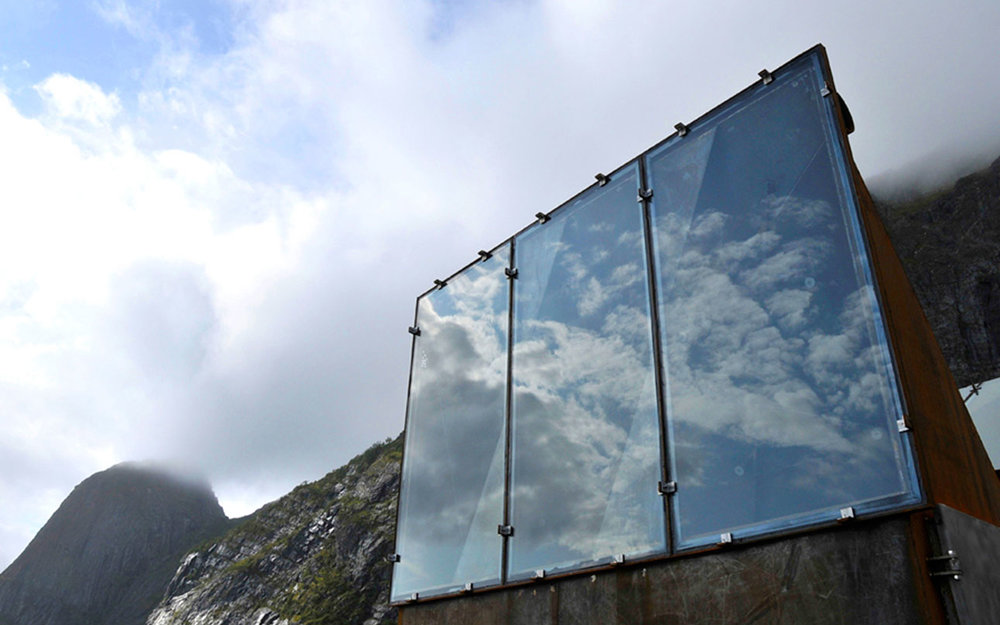
Akkarvik roadside rest room by Manthey Kula
With the experience of the surrounding nature being very intense, the building is also aimed to present a pause from these impressions, shutting the scenery out. Nevertheless, two large glass openings provide view to the sky and the reflected horizon.
The project was nominated for the Mies van der Rohe Award 2011.